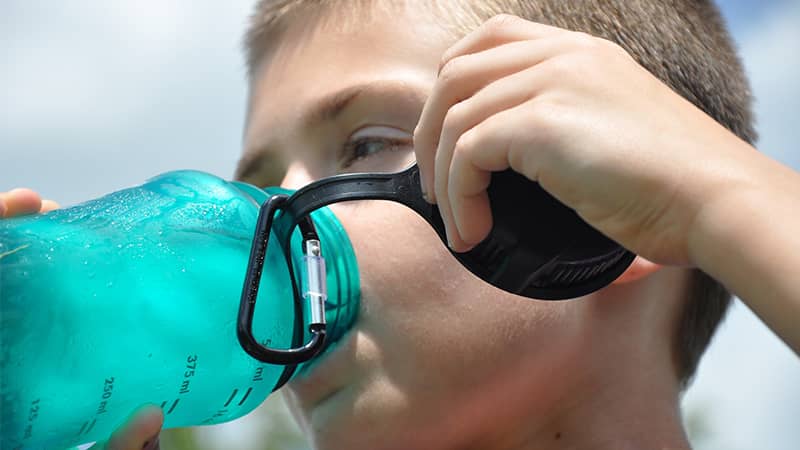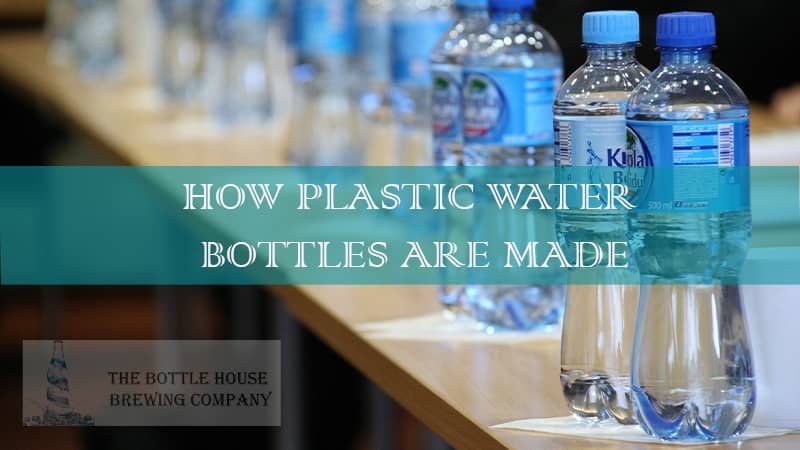A plastic water bottle is one of the most important things in our everyday life. No doubt, many of us can’t think a single day without using it. But, ever wondered how plastic water bottles are made? This article will tell you about the whole process of making plastic water bottles. To know more, read on!
What Are Plastic Water Bottles Made of?
When you talk about plastic water bottles, they usually hold portable water. So, you can carry it to different places. Not to mention, these bottles are made of plastics. There are different types of plastics available. But, not every type of plastic is not used in the water bottle manufacturing process.
In the case of portable water bottles, polyethylene terephthalate (PET) is used because of its sturdy and light features. Check the tables below to know which plastic-type is used for which type of bottle.
| Plastic Type | Usage |
| Polyethylene Terephthalate (PET) | To make typical disposable plastic bottles |
| High-Density Polyethylene (HDPE) | To make rigid bottles |
| Low-Density Polyethylene (LDPE) | To make squeeze bottles |
| Polypropylene (PP) | To make pill bottles |
| Polycarbonate (PC) | Refillable water bottles |
| Polyvinyl Chloride (PVC) | To use reusable water bottles |
How Plastic Water Bottles Are Made (Step-By-Step Process)

Plastic water bottles are mainly manufactured in two major methods- Injection molding and Blow molding. When it comes to reusable water bottles, various types of plastics are made to manufacture them. Plastic pellets are the main raw materials used to make plastic water bottles.
Below I will discuss the injection molding method which is used in most plastic water bottle manufacturing plants. The following steps are included in the plastic bottle manufacturing process flow chart.
Step 1- Place Plastic Pellets into The Hopper:
The entire process starts from putting the small plastic pellets into the hopper. Hopper is a contraption which got a funnel shape.
Step 2- The Dying Process
As plastic bottles come in different colors, the dying process is pretty much important. In this step, the pellets go through a dying process. They are mixed with the dye of the intended color of bottles.
Step 3- Creating the Moldable Goo
At this point, you need to push the dyed pallets through a heated tube. The tube has a temperature of 150-degree to 150-degree Fahrenheit. As a result, the plastic pallets will be melted down, and eventually, they will be transformed into the moldable goo
Step 4- First Molding
In this step, the goo needs to go through the first molding process. Mold is a chamber where goo gets its shape as a bottle. So, the goo is injected into the molding chamber. Later, they got a cone shape and become hard while cooled down.
Step 5-Reheating
If the manufacturer doesn’t get their desired shape in the first molding round, they may need to go for the second round of molding. In most cases, you will get plastic cones in the first molding. Before moving further, they are heated again so that they can become flexible enough to go for the second molding process.
Step 6- Larger Molding
At this point, plastic cones are put into a larger mold so that they can get the actual plastic bottle shape. Air is applied in the center in this step for reshaping the bottles. No doubt, this molding process is important for giving the bottle the desired shape.
Step 7-Cooling 7 Packaging
At this point, all you have to do is cool down the bottles. Then they will go through all of the packaging and leveling processes. That’s how plastic water bottles are made by following the injection molding method.
How Plastic Water Bottles are Made? Other Manufacturing Methods
Other manufacturing methods are also used in the plastic water bottle manufacturing process. As I mentioned earlier, the second most popular method is the blow molding method. It is also widely known as rotational molding.
How Blow Molding Works
In this method, thermoplastic polymers are actively pressurized by air so that they can turn into hollow objects, for example, water bottles, plastic containers, etc. The technique used here is pretty much ancient, but still, many manufacturers use it. There are three types of blow molding as follows-
- Extrusion Blow Molding: This method is widely used for manufacturing sports bottles in large batches. The filling and labeling of the bottles are also done in the manufacturing plant.
- Injection Blow Molding: This method has some similarities with the typical injection molding. In this method, the polymer is melted down and injected into a mold. I hope you already know what mold is. It gives the bottle its shape. Then the bottles are blown out properly from the tube which is known as a parison.
- Stretch Blow Molding: It is another type of blow molding process which is also pretty much interesting. In this method, plastic has to go through a stretching process.
After they are stretched, by an innovative blowing process they will be expanded. As a result, you will get a plastic bottle as the end product. No doubt, this type of water bottle is quite durable.
I won’t deny, it may confuse you a bit as there are many types of methods that can be used in a plastic bottle manufacturing process. But, the truth is different methods work perfectly for different types of bottles.
So, the manufacturer first decides about the type of bottle they are going to make. Then, they determine which method they should follow. No wonder, choosing the right method for the right type of bottle is crucial here.
Final Words
There is no doubt that plastic water bottles are something without which we will suffer in our daily life. Not to mention, different types of plastic bottles are available in the market. Every bottle has to go through a rigorous manufacturing process.
In this article, I tried to tell you everything about how are plastic water bottles made. I hope now you know how they are manufactured. As I mentioned earlier the crucial point is choosing the right method that a manufacturer should use in their plant.
Read Also
- How to Remove Smell from Plastic Water Bottle
- Easy Plastic Bottle Crafts
- Stainless Steel vs Plastic Water Bottles: Which 1 is Better?
Table of Contents

